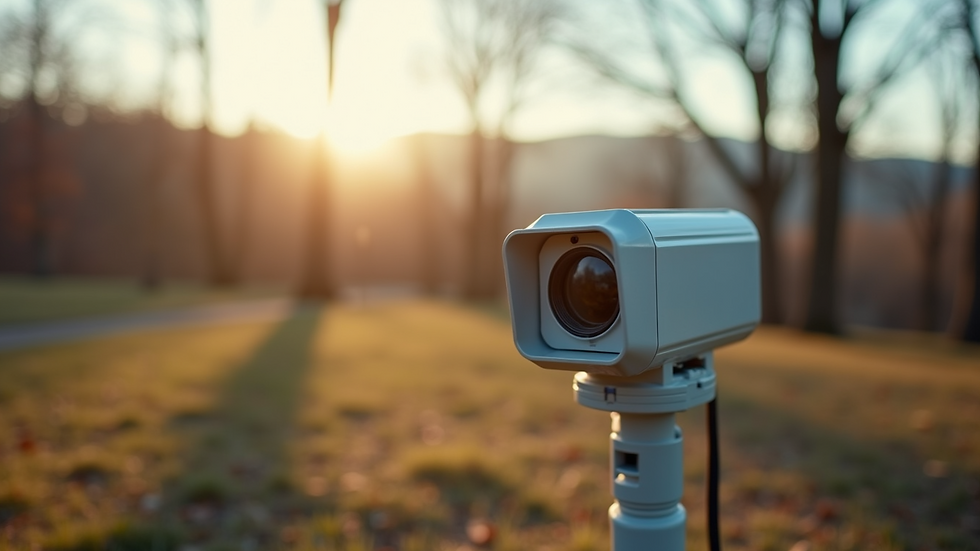Tools and Guides for Learning About Weather Forecasting
- Joshua Bailey

- Jul 7
- 4 min read
Weather forecasting is an essential skill that can help individuals prepare for daily changes in climate and assist professional meteorologists in their work. Understanding weather patterns enables better decisions whether for planning a picnic, managing agricultural production, or responding to emergencies. In this blog post, we'll explore the various tools and guides available to help you learn about weather forecasting.
Weather Forecasting Tools
Several tools are available to assist both amateurs and professionals in predicting weather conditions. These tools vary from simple applications to sophisticated systems, offering a wide range of functionalities.
One essential tool is weather radar. This system uses radio waves to detect precipitation and its movement, giving users real-time updates on storms and rainfall. It's vital for tracking severe weather conditions such as thunderstorms or tornadoes.
Another invaluable resource is satellite imagery. Satellites provide a larger view of the Earth's atmosphere and are crucial for observing weather systems, cloud cover, and temperature variations. They can help in identifying storm developments or shifts in weather patterns.
Additionally, weather apps are increasingly popular for personal use. Apps such as The Weather Channel or AccuWeather provide local forecasts at your fingertips, combining radar data, satellite images, and hourly updates to help users stay informed.

How to Use Weather Models
Understanding and utilizing weather models is critical for accurate forecasting. Weather models are mathematical representations of the atmosphere and require careful interpretation.
One popular model is the Global Forecast System (GFS), which simulates weather patterns on a global scale. Learning how to read GFS outputs can provide insights into large weather systems and their expected impacts.
For more localized forecasts, the High-Resolution Rapid Refresh (HRRR) model is beneficial. It has 1-kilometer resolution and updates every hour, making it excellent for short-term forecasting. By comparing outputs from both models, you can gain a more comprehensive understanding of impending weather conditions.
To further your education, consider enrolling in online courses that focus on meteorology and forecasting. Platforms like Coursera and Udemy offer courses led by experts in the field.

What's the Best Source for Weather?
Choosing the best source for weather forecasting can be daunting given the plethora of options. However, specific sources are more reliable than others.
According to meteorologists, the National Weather Service (NWS) is often considered the most authoritative source for weather information in the United States. The NWS offers detailed forecasts, warnings, and updates directly from trained professionals. This makes it an essential tool for anyone serious about understanding weather forecasting.
In addition to official sources, websites like Weather Underground can provide accurate local forecasts alongside user-generated data from personal weather stations. This blend of official and community-sourced information can create a comprehensive view of current weather conditions.

Key Resources for Learning
In addition to tools and models, various resources can help you deepen your understanding of weather forecasting. Books, online platforms, and community forums contribute significantly to meteorological education.
A highly recommended book is "The Weather Book: Why it Matters in the World" by Michael M. Wiegand. This book offers a comprehensive overview of weather, making complex concepts accessible to beginners.
On online platforms, Khan Academy offers free courses on atmospheric sciences. These courses feature interactive lessons, helping learners grasp the underlying principles of meteorology.
Lastly, joining forums and online communities like Reddit’s /r/weather can be beneficial. Here, weather enthusiasts share knowledge, experiences, forecasts, and discussions about recent weather events.
By utilizing these key resources, you will build a solid foundation in understanding weather forecasting.
Hands-On Learning and Practice
Engaging in hands-on learning is one of the most effective ways to understand weather forecasting better. Monitoring weather data daily and attempting to create your own forecasts can develop practical skills.
Consider starting a weather journal. Make daily notes of temperature, humidity, wind speed, and precipitation. Compare these observations against national forecasts to analyze discrepancies and gain insights into forecasting techniques.
Participating in community science projects can also provide valuable practical experience. Many organizations seek volunteers to assist with weather observation and data collection; this can be a rewarding way to learn more about meteorology in real-world scenarios.
Moreover, consider collaborating with local meteorologists. Shadowing professionals at a local weather station or news station can give you a glimpse of the day-to-day activities in weather forecasting.
Learning by doing helps solidify the theoretical knowledge gained from reading and online research.
The Importance of Weather Education Resources
Access to reliable weather education resources is crucial for aspiring meteorologists and enthusiastic learners alike. These resources provide comprehensive and scientifically-backed information that can help in building a strong foundation in weather patterns and forecasting techniques.
Many educational platforms offer free tutorials that cater to different skill levels. Websites dedicated to weather education provide interactive tools, articles, and webinars that simplify complex concepts for learners.
In addition, many organizations host events and workshops that encourage community engagement in meteorological sciences. Participating in these can enhance your understanding of weather forecasting from a hands-on perspective.
In summary, the right education resources can empower individuals with the knowledge necessary to interpret weather data and make informed predictions.
Creating Your Own Forecasting System
Once you have grasped the fundamentals of weather forecasting, why not create your own forecasting system? Setting up a home weather station is an exciting project that can provide real-time data for your local area.
You can purchase home weather kits that measure temperature, wind speed, humidity, and rainfall. By gathering this data, you can compare it against online forecasts and refine your forecasting skills.
Building an online blog or using social media platforms to share your forecasts can also enhance your learning. Engaging with others who have similar interests can offer fresh perspectives and advice, fueling your passion for meteorology.
By embracing these steps, you will not only gain a deeper understanding of weather forecasting but also share your knowledge with others, enriching the community as a whole.
Final Thoughts
Learning about weather forecasting is a rewarding endeavor that opens the door to understanding our environment better. By utilizing a variety of tools, resources, and practice methods outlined in this blog, you will be well on your way to becoming knowledgeable in forecasting weather patterns.
Stay curious and keep exploring the vast world of meteorology! The more you learn, the better prepared you will be for any weather surprises Mother Nature has in store.




Comments